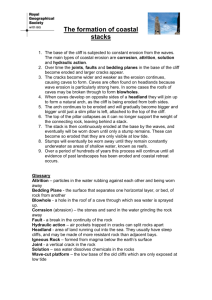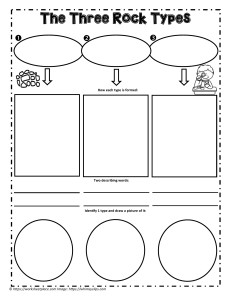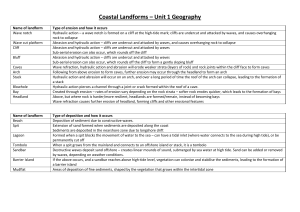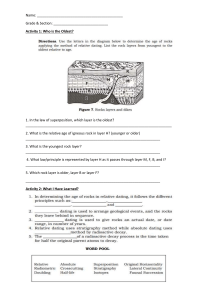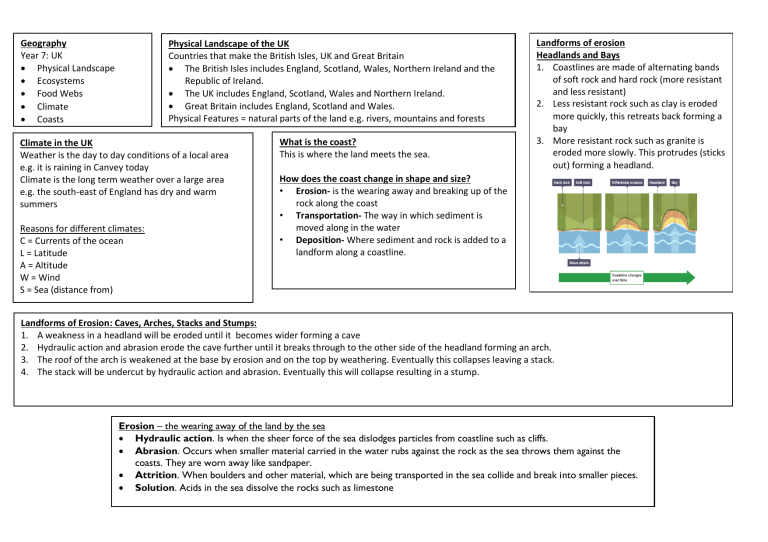
Geography Year 7: UK • Physical Landscape • Ecosystems • Food Webs • Climate • Coasts Physical Landscape of the UK Countries that make the British Isles, UK and Great Britain • The British Isles includes England, Scotland, Wales, Northern Ireland and the Republic of Ireland. • The UK includes England, Scotland, Wales and Northern Ireland. • Great Britain includes England, Scotland and Wales. Physical Features = natural parts of the land e.g. rivers, mountains and forests Climate in the UK Weather is the day to day conditions of a local area e.g. it is raining in Canvey today Climate is the long term weather over a large area e.g. the south-east of England has dry and warm summers Reasons for different climates: C = Currents of the ocean L = Latitude A = Altitude W = Wind S = Sea (distance from) What is the coast? This is where the land meets the sea. Landforms of erosion Headlands and Bays 1. Coastlines are made of alternating bands of soft rock and hard rock (more resistant and less resistant) 2. Less resistant rock such as clay is eroded more quickly, this retreats back forming a bay 3. More resistant rock such as granite is eroded more slowly. This protrudes (sticks out) forming a headland. How does the coast change in shape and size? • Erosion- is the wearing away and breaking up of the rock along the coast • Transportation- The way in which sediment is moved along in the water • Deposition- Where sediment and rock is added to a landform along a coastline. Landforms of Erosion: Caves, Arches, Stacks and Stumps: 1. A weakness in a headland will be eroded until it becomes wider forming a cave 2. Hydraulic action and abrasion erode the cave further until it breaks through to the other side of the headland forming an arch. 3. The roof of the arch is weakened at the base by erosion and on the top by weathering. Eventually this collapses leaving a stack. 4. The stack will be undercut by hydraulic action and abrasion. Eventually this will collapse resulting in a stump. Erosion – the wearing away of the land by the sea • Hydraulic action. Is when the sheer force of the sea dislodges particles from coastline such as cliffs. • Abrasion. Occurs when smaller material carried in the water rubs against the rock as the sea throws them against the coasts. They are worn away like sandpaper. • Attrition. When boulders and other material, which are being transported in the sea collide and break into smaller pieces. • Solution. Acids in the sea dissolve the rocks such as limestone

